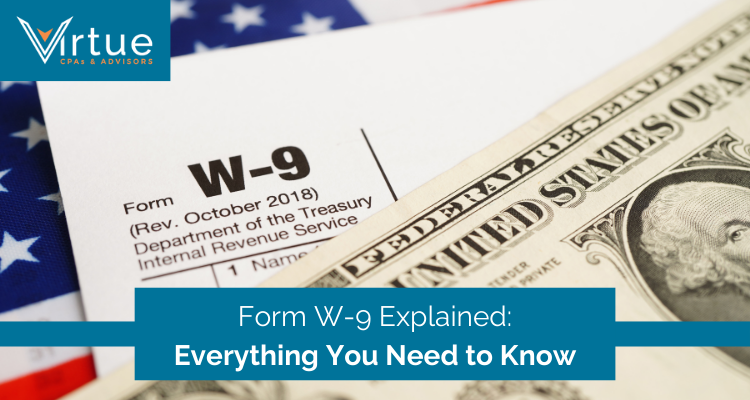For business owners, independent contractors, and freelancers, proper tax documentation forms the foundation of sound financial management. Among these essential documents, Form W-9 stands as a critical component in the business-client relationship.
This comprehensive guide demystifies Form W-9, providing you with practical knowledge and actionable strategies to manage this documentation effectively. Whether you're a seasoned entrepreneur or just beginning your independent contractor journey, mastering Form W-9 requirements represents an important step toward sound financial management.
Understanding the Purpose of Form W-9
Form W-9, officially titled Request for Taxpayer Identification Number and Certification, serves as the standard document businesses use to collect critical tax information from vendors, contractors, and service providers.
Think of Form W-9 as your tax identity verification. When a client or business engages your services, they need verifiable information to properly report payments made to you to the Internal Revenue Service (IRS). The W-9 provides this information in a standardized, recognized format.
Unlike forms submitted directly to the IRS, Form W-9 remains with the business that requested it. They later use this information when preparing and filing information returns such as Form 1099-NEC or Form 1099-MISC.
Key Components of Form W-9
The form contains several essential sections that require accurate completion:
| Section | What to Include | Why It Matters |
|---|---|---|
| Name | Your full legal name | Must match tax records for proper processing |
| Business Name | Business name (if apply) | Required for proper entity identification |
| Federal Tax Status | Your tax entity type | Determines appropriate tax treatment |
| Address | Current mailing address | Ensures proper delivery of tax documents |
| TIN | SSN or EIN | Critical for accurate income reporting |
| Certification | Signature and date | Verifies information accuracy under penalty of perjury |
Providing incorrect information on Form W-9 can lead to back up withholding of 28% of your payments (increased from 24% for 2025), trigger IRS notices, and potentially complicate your tax filing process.
Who Needs to Complete a W-9 Form?
Understanding when Form W-9 is required helps you respond promptly to legitimate requests and maintain professional business relationships.
The form is typically required for:
- Independent contractors providing professional services to businesses or clients.
- Freelancers working with multiple clients throughout the tax year.
- Self-employed professionals across various industries seeking payment.
- Business owners receiving payments for goods or services rendered.
- Individuals earning interest, dividends, or other investment income.
- Vendors and suppliers providing goods or services to businesses.
Regular employees typically don't complete W-9 forms, as their income is reported through Form W-2 instead. The W-9 specifically facilitates reporting for non-employee compensation and certain other payments.
Common scenarios requiring Form W-9 submission:
- Initiating a new business relationship with a client
- Establishing vendor relationships with organizations
- Opening certain financial accounts or investments
- Receiving royalty or rental income payments
- Providing services valued at $600 or more annually to a business
Maintaining organized records of whom you've provided W-9 forms to helps track potential 1099 forms you should receive by January 31st each year, ensuring complete and accurate income reporting on your tax returns.
How to Properly Complete a W-9 Form
Accurate completion of Form W-9 ensures proper tax reporting and prevents potential complications. Follow these step-by-step guidelines:
1. Enter Your Legal Name
Input your full legal name as shown on your tax return in Line 1. This should match exactly what appears on your tax filings with the IRS—not nicknames, abbreviated versions, or trade names.
If you're a sole proprietor, use your individual name, not your business name. Your business name can be entered on Line 2 if applicable.
2. Business Name (If Different)
If you operate under a business name different from your personal name, enter it in Line 2. For sole proprietors, this would be your 'doing business as' (DBA) name.
For single-member LLCs, enter your name in Line 1 and the LLC's name in Line 2, unless the LLC is classified as a corporation or partnership for tax purposes.
3. Select Your Federal Tax Classification
Check the appropriate box for your tax classification. Your selection directly impacts how income is reported and taxed:
- Individual/sole proprietor or single-member LLC
- C Corporation
- S Corporation
- Partnership
- Trust/estate
- Limited liability company
For LLCs, you must indicate the tax classification (C, S, or P) in the space provided. This selection should align with how your business has elected to be treated for federal tax purposes.
4. Enter Your Address
Provide your complete mailing address, including street address, city, state, and ZIP code. This is where tax-related documents, including Form 1099, will be sent.
If your mailing address differs from your physical business location, consider including both to ensure you receive all important tax correspondence.
5. Provide Your Taxpayer Identification Number (TIN)
Enter your Social Security Number (SSN) if you're an individual or sole proprietor. If you have an Employer Identification Number (EIN), you can use that instead.
For entities like corporations, partnerships, or LLCs, enter your business's EIN. Using an EIN rather than your SSN when possible provides an additional layer of personal information protection.
6. Sign and Date the Form
Sign and date the form to certify that:
- The TIN provided is correct
- You're not subject to backup withholding
- You're a U.S. citizen or other U.S. person
Without your signature, the form is considered incomplete and may lead to backup withholding or payment delays.
When to Submit a W-9 Form
Timing matters when it comes to Form W-9 submission. Understanding when to provide this documentation helps maintain smooth business operations and prevents payment delays.
Generally, you should provide a completed W-9 when:
- Beginning a new business relationship where you'll receive payment for services or goods
- When specifically requested by a client or business
- After changes to your information, such as legal name changes, business structure adjustments, or TIN modifications
Most businesses will request your W-9 before making their first payment to you, as part of their vendor setup process.
A W-9 remains valid indefinitely until your information changes. Unlike some tax forms with expiration dates, the W-9 stays current as long as your provided information remains accurate.
Many businesses implement periodic W-9 renewal policies (often every 3–5 years) as part of their compliance procedures. This helps them ensure they maintain current vendor information for accurate tax reporting.
Consequences of Not Submitting a W-9 Form
Non-compliance with W-9 requests can trigger several adverse consequences that impact your business operations and financial health:
Backup withholding represents the most immediate financial impact. The business requesting your W-9 becomes legally obligated to withhold 28% of your payments and remit this amount directly to the IRS if you fail to provide a properly completed W-9.
Payment delays frequently occur when W-9 forms remain outstanding. Many organizations implement payment policies that prevent vendor payments until proper tax documentation is received, directly impacting your cash flow.
Strained business relationships can develop when tax documentation remains outstanding. Professional relationships may suffer if you're perceived as non-compliant or difficult to work with.
Tax filing complications may arise when businesses lack your correct information. Without proper documentation, they may file incorrect 1099s or miss filings altogether, potentially triggering IRS notices or audits that affect both parties.
If you have concerns about providing certain information on a W-9, discuss alternative documentation options with the requesting business rather than simply ignoring the request.
Protecting Your Information on W-9 Forms
Security concerns surrounding Form W-9 are legitimate, given the sensitive nature of the information provided. Implementing proper precautions helps protect your personal and financial information.
Here's how to protect yourself:
Verify the requestor's legitimacy before providing your W-9. Confirm you're dealing with a legitimate business with a valid reason for requesting your information.
Only share your W-9 through secure channels, such as:
- Encrypted email services with end-to-end protection
- Secure document upload portals with authentication
- Password-protected files using strong encryption
- Hand delivery when practical and possible
Avoid sending unencrypted W-9 forms via standard email or fax whenever possible. These transmission methods lack adequate security for sensitive information.
Consider using an EIN instead of your SSN when appropriate. For business entities, using an Employer Identification Number provides an additional layer of personal information protection.
Digital security best practices for tax documents include:
- Password-protecting PDF files containing tax information
- Using secure file-sharing services with encryption capabilities
- Regularly monitoring your credit reports for unauthorized activity
- Considering identity theft protection services for additional security
At Virtue CPAs, we implement comprehensive security protocols for all client tax documentation, ensuring your sensitive information remains protected throughout the document lifecycle.
Understanding Different Tax Forms: W-9, W-4, and 1099
Understanding the relationship between various tax forms helps clarify your reporting obligations and expectations. These forms serve different purposes within the tax reporting ecosystem:
| Form | Primary Purpose | Who Completes It | Where It Goes | Key Deadlines |
|---|---|---|---|---|
| W-9 | Information collection | Independent contractors | Stays with requester | No specific deadline; provided upon request |
| W-4 | Tax withholding | Employees | Stays with employer | Completed at hiring and when tax situation changes |
| 1099-NEC | Non-employee compensation reporting | Businesses | Sent to IRS and contractor | Must be provided to recipients by January 31 |
| 1099-MISC | Miscellaneous income reporting | Businesses | Sent to IRS and recipient | Must be provided to recipients by January 31 |
| W-2 | Wage reporting | Employers | Sent to IRS and employee | Must be provided to employees by January 31 |
The W-9 facilitates information gathering, while forms like 1099-NEC and 1099-MISC report actual payment information to the IRS. This relationship highlights the W-9's role as the foundation for accurate income reporting and tax compliance.
Completing W-9 Forms for Different Business Structures
Different business structures require specific approaches to Form W-9 completion. Understanding the proper method for your entity type ensures accuracy and appropriate tax treatment.
Sole Proprietors
- Enter your personal name on Line 1
- Enter your business name (if any) on Line 2
- Check the Individual/sole proprietor box
- Use your SSN or EIN as your TIN
Single-Member LLCs
- Enter your personal name on Line 1 (unless classified as a corporation)
- Enter the LLC name on Line 2
- Check the Individual/sole proprietor or single-member LLC box
- Provide your SSN (or EIN if you have one)
Multi-Member LLCs
- Enter the LLC's legal name on Line 1
- Leave Line 2 blank (unless operating under another name)
- Check the Limited liability company box
- Enter the appropriate tax classification code (P for partnership is common)
- Provide the LLC's EIN
S-Corporations and C-Corporations
- Enter the corporation's legal name on Line 1
- Complete Line 2 if operating under a different name
- Check the appropriate corporation type box
- Enter the corporation's EIN
- An authorized officer must sign the form
The business structure you select has significant implications for your tax obligations. Consult with a tax professional to determine the most advantageous structure for your specific situation.
Avoiding Common W-9 Form Errors
Even seemingly simple forms can contain errors that lead to complications. Being aware of common mistakes helps you avoid potential issues:
Missing or incorrect TIN: Double-check your SSN or EIN for accuracy, as errors can trigger TIN matching notices from the IRS and potentially lead to backup withholding.
Wrong legal name: Ensure your name exactly matches what's on file with the Social Security Administration or IRS registration. Name mismatches are a common trigger for IRS notices.
Incorrect business classification: Selecting the wrong entity type can cause tax reporting problems and potentially lead to audit flags or improper tax treatment of your income.
Forgetting to sign and date: An unsigned W-9 is incomplete and may be rejected by the requesting business. The certification is a legal attestation that the information provided is accurate.
Using outdated forms: The IRS periodically updates Form W-9, so ensure you're using the current version from irs.gov. Using outdated forms may lead to rejection by more compliance-focused organizations.
Keep copies of all submitted W-9 forms along with records of when and to whom they were provided. This documentation proves valuable if questions arise about your reporting compliance.
Electronic Submission of W-9 Forms
Yes, in today's digital business environment, electronic W-9 submission has become increasingly common and offers advantages in efficiency and security.
Electronic signatures are generally acceptable for Form W-9, provided they meet the requirements of the Electronic Signatures in Global and National Commerce Act (E-SIGN).
Digital submission options include:
- Electronic signature platforms like DocuSign or Adobe Sign
- Secure client portals with electronic signature capabilities
- Email with password-protected, digitally signed PDFs
- IRS-approved digital identity verification services
The IRS has confirmed that electronic signatures are valid for Form W-9, making digital completion and submission a convenient option for both businesses and contractors.
When submitting electronically, ensure you're using a secure, encrypted platform that protects your sensitive information. Standard email is generally not considered secure enough for unprotected tax documents.
Frequency of W-9 Form Submission
No, you don't need to submit a new W-9 annually unless your information changes or the business specifically requests an updated form.
Form W-9 contains no expiration date, and the information provided remains valid until changes occur in your:
- Legal name
- Business name
- Tax identification number
- Entity classification
- Address
- Tax exemption status
If your business name changes after you've submitted a W-9, submit an updated W-9 to all businesses that have your previous information. This ensures their records remain current and prevents tax reporting discrepancies.
Maintain a list of all businesses that have your W-9 on file so you can efficiently update them when changes occur to your information.
How Virtue CPAs Can Help with Your W-9 and Tax Compliance
At Virtue CPAs, we understand that tax compliance extends far beyond annual tax returns. Our integrated approach to tax documentation helps businesses establish sound practices that prevent costly errors and unwanted withholding.
We work closely with clients to ensure their W-9 processes align with broader tax strategies, creating consistency across all financial documentation. Our team offers personalized guidance on completing and managing Form W-9 for your specific business structure, whether you're a sole proprietor, LLC, S-corporation, or other entity type.
We also provide support for the full documentation lifecycle, from initial completion to proper storage and timely updates when your information changes. Beyond W-9 assistance, Virtue CPAs delivers comprehensive tax compliance services including 1099 preparation, vendor documentation review, and strategic tax planning.
Conclusion
Form W-9 may appear to be a simple document, but its proper completion and management are crucial components of sound tax administration and business practice. This form serves as the foundation for accurate income reporting, helps prevent unnecessary backup withholding, and facilitates smooth business relationships.
By understanding when to submit Form W-9, how to complete it correctly for your specific business structure, and how to protect your sensitive information, you establish a solid foundation for tax compliance as an independent contractor, freelancer, or business owner.
At Virtue CPAs, we're committed to helping you navigate the complexities of tax documentation with confidence and precision. Our expertise in tax compliance and business advisory services positions us to provide valuable guidance tailored to your unique situation.
Ready to strengthen your tax documentation processes and ensure full compliance with current regulations? Contact Virtue CPAs today for expert guidance tailored to your specific needs. Our team of experienced professionals is standing by to help you optimize your financial strategy and minimize tax-related risks.






